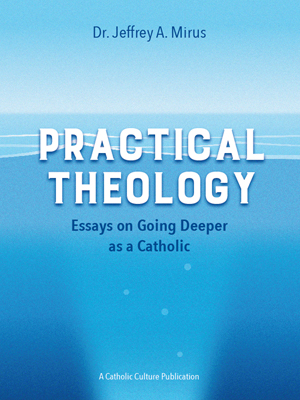Catholic Activity: Discovering and Developing Gifts
Newland tells parents how to discover where their children's talents lie and praise them for their creativity.
DIRECTIONS
Discovery of these gifts almost always begins with art. It is wonderful to hear children tell why they create, why they draw or paint or model or cut, because they are so unabashed about explaining how important it is to be known as someone who can do something: "Because I like to show people what I can draw." And one little boy we know put all his pictures against the windowpane facing the street. "Else how can everybody see what I draw?"... "Because I make things pretty good out of clay and when I'm done I have something I made."
Out of all their impressions and knowledge, their most eloquent summations and delightful visions, in a way far more intelligible to them than any attempt at words, children will set down on paper how the world looks and what it is all about. And when their lives include a knowledge of the supernatural, they will make ever so clear how real spiritual realities are to them.
A five-year-old, hearing a news broadcast about a fire, came to his mother later in the day with a picture of it. This was the house afire, and this the fire truck, here the firemen and here "the poor whose house burned up." The poor were weeping in the front yard.
"And who is this in back of the house?"
"Oh, that. That's an angel praying for the poor."
Knowing the fiver quite well, I am sure that a verbal explanation of it would not have included the angel. Alone with his knowledge of calamities and how God sometimes permits them for reasons He alone knows (but always so that some greater good might come), the addition of the angel was inevitable: one of the signs of Divine Love caring for the helpless.
Nor does the five-year-old's wisdom manifest itself only in drawings of the supernatural. He has salty things to say about the natural too. Like the drawing, on the blackboard, of a man's profile with a lot of scribbles in front of his mouth.
"Talking real loud," he explained.
The grown-ups who heard were rather uncomfortable as they reflected how often they talk "real loud."
All children can draw. Anyone who holds that they cannot and can demonstrate with a houseful of children where there is not a pencil mark on the wall, might have an argument. But I don't believe there is such a house on the face of the earth. Until the children are older and it is time to determine how much talent they have, how far it should be pursued, all they need to draw and draw and draw is lots of praise. There is a time to praise and a time to criticize. If some attempts are better than others, there is always something good one can honestly say about even the least successful tries: "Nice sun, lovely rain, good idea, bright colors . . ." Something in praise, even if no more than praise that they will try to create: "How wonderful, that you can sit down and make so many pictures!"
I know a man who wrote stories all the time as a small child. A zealous adult, anticipating the "constructive criticism" stage by about five years, so discouraged him with well-meant criticism that he gave the whole thing up at the age of eight. Thirty years later he began to write — thirty years of lost training and practice in the art of self-expression. Not all children will write, or draw, or sing, or dance professionally, but they should be encouraged to explore these fields, and in all probability if we let them alone while they are little, they will discover for themselves the medium through which they can give their most eloquent expression.
Coloring books, cutting out ready-made paper dolls, are not creative. They are fun and exercise, and technically useful for teaching things other than art, but there is nothing remotely creative about coloring blue where a picture is labeled "color me blue," or putting scissors to dotted lines labeled "cut here." To be entirely creative, children must invent with simple materials and the ideas in their heads. We must be careful to keep hands off, allowing them to reproduce things as they see them, not we, and above all discouraging tracing and copying. There are some cutting and design projects where patterns are needed for tracing and repetition, some illustrating projects where pictures are needed for reference, but by and large children will provide and invent all by themselves. It is robbery of the worst sort to allow them to substitute the hackneyed ideas of others, slavishly copied, for the rich and imaginative pictures they have inside.
Activity Source: We and Our Children by Mary Reed Newland, Image Books, 1961







